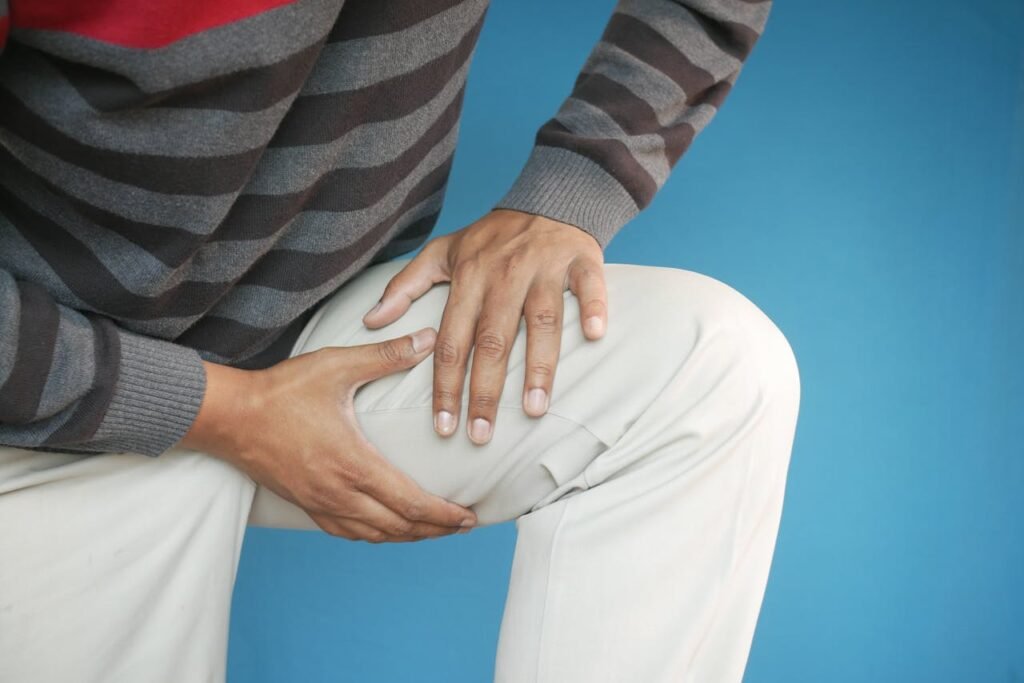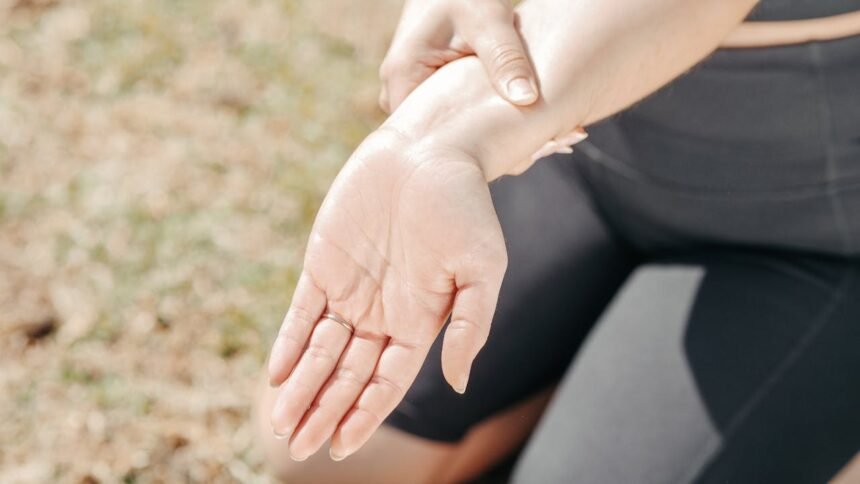Arthritis is a common condition that affects millions of people worldwide, causing pain and discomfort in the joints. If you’re starting to notice stiffness or aches, especially in the mornings, it could be an early sign. But don’t worry – recognising these symptoms early can make a big difference in managing the condition effectively. In this article, we’ll explore what arthritis is, its early signs, types, risk factors, and ways to prevent or treat it. We’ll keep things simple and straightforward, using UK English throughout.
Whether you’re in your 40s or older, or even younger and concerned about joint health, understanding arthritis can help you take control. Let’s dive in.
What is Arthritis?
Arthritis isn’t just one disease; it’s a term that covers over 100 conditions involving inflammation in the joints. The word comes from Greek, meaning “joint inflammation,” and it leads to swelling, pain, and stiffness that can worsen over time. In the UK, it’s estimated that around 10 million people live with some form of arthritis, making it a leading cause of disability.mayoclinic
At its core, arthritis happens when the cartilage – the smooth tissue that cushions your joints – breaks down or becomes inflamed. This can make everyday tasks like walking or gripping objects tricky. While it’s often linked to ageing, it can affect anyone, including children. For more on the basics, check out this overview from Mayo Clinic.nhs
Common Types of Arthritis
There are several types, but the most common are osteoarthritis (OA) and rheumatoid arthritis (RA). Osteoarthritis is like wear and tear on your joints, often hitting the knees, hips, and hands. It usually develops after 40 and is more common in women or those with a family history.nia.nih
Rheumatoid arthritis is different – it’s an autoimmune condition where your body attacks its own joints, causing inflammation. It can start between 30 and 50, affecting small joints like those in the hands and feet first. Other types include psoriatic arthritis, which links to skin conditions, and gout, caused by uric acid buildup. Learn about RA symptoms in detail here.clevelandclinic+2
Each type has unique triggers, but they all share pain and swelling as key features.
Early Signs and Symptoms to Watch For
Spotting arthritis early is crucial because prompt treatment can slow its progress. The first clue is often joint pain, which might feel like a dull ache or burning sensation, especially after activity. This pain can come and go, but it often worsens with age or weather changes.healthline
Stiffness is another big red flag, particularly in the morning. If it lasts more than an hour, it could point to inflammatory types like RA. Swelling around the joints, warmth, or redness are also common, as the joint lining becomes inflamed. You might notice reduced range of motion, making it hard to bend or straighten fully.clevelandclinic+1
For osteoarthritis, early signs include pain in weight-bearing joints after exercise, like climbing stairs. In RA, fatigue, malaise, or even a low-grade fever might appear before joint issues. Psoriatic arthritis could show up with skin rashes alongside joint pain. If you’re experiencing these, see a doctor soon. For a deeper look at early symptoms, visit Healthline’s guide.jnj+2
Don’t ignore subtle changes – early intervention can prevent long-term damage.

Risk Factors for Developing Arthritis
While anyone can get arthritis, certain factors increase your chances. Age is a major one; as we get older, joint tissues change, promoting conditions like OA. Women are more at risk for RA, possibly due to hormones, and family history plays a role in many types.nature+1
Lifestyle matters too. Being overweight puts extra stress on joints, raising OA risk. Smoking is linked to RA, and injuries from sports or accidents can lead to post-traumatic arthritis. Metabolic issues, like high uric acid for gout, or autoimmune tendencies also contribute.kingedwardvii+2
Inflammation from poor diet or inactivity can worsen things, creating a cycle of joint damage. Understanding these risks helps in prevention – more on that later.healthline
How is Arthritis Diagnosed?
Diagnosis starts with a chat about your symptoms and medical history. Your doctor will examine your joints for swelling, tenderness, or limited movement. Blood tests can check for inflammation markers, like in RA, while imaging like X-rays or MRIs shows joint damage.niams.nih+1
For RA, they might test for specific antibodies, and joint fluid analysis can rule out infections. It’s not always straightforward, as early stages mimic other conditions, but tools like ultrasound help pinpoint issues. If you suspect arthritis, book a GP appointment. For diagnosis steps, read this from NIAMS.mayoclinic+1
Early diagnosis leads to better outcomes, so don’t delay.
Treatment Options for Arthritis
There’s no cure, but treatments can ease symptoms and improve life quality. For OA, pain relievers like paracetamol or NSAIDs help, along with physical therapy to strengthen muscles. In RA, disease-modifying drugs like methotrexate target the immune system.hopkinsarthritis+1
Biologics, which block inflammation signals, are game-changers for severe cases. Lifestyle changes, like weight management, are key too. Surgery, such as joint replacement, is a last resort for advanced damage. Always consult a specialist for tailored advice. Explore treatment options here.hopkinsarthritis+1
Managing Arthritis Pain Effectively
Pain management is about more than pills. Hot and cold therapy can soothe aches – try a warm bath for stiffness or ice for swelling. Exercises like swimming build strength without stress.mayoclinic+1
Mindfulness and meditation reduce stress, which can flare symptoms. Over-the-counter creams or TENS machines provide relief too. For daily tips, check Mayo Clinic’s do’s and don’ts.mayoclinic+1
Stay active, but listen to your body to avoid overdoing it.
The Link Between Arthritis and Ageing
As we age, our joints naturally wear down, with cartilage thinning and inflammation rising – a process called “inflammaging”. Mitochondrial dysfunction and oxidative stress add to this, making OA more likely.nature
But ageing isn’t the only culprit; healthy habits can mitigate risks. Older adults might notice symptoms in the spine or knees first. For insights on ageing and OA, see this Nature article.nhs+1
Preventing Arthritis: Steps You Can Take
Prevention is possible with smart choices. Maintain a healthy weight to reduce joint strain. Eat anti-inflammatory foods like berries, fatty fish, and greens, and stay hydrated.arthritis+1
Avoid smoking, limit alcohol, and protect joints from injury – wear supportive shoes and use proper techniques in sports. Regular check-ups catch issues early. For 39 prevention tips, visit King Edward VII’s guide.kingedwardvii
Home Remedies and Exercises for Relief
Simple home remedies can help. Turmeric’s curcumin fights inflammation – add it to meals. Ginger tea or acupuncture might ease pain, though evidence varies.healthline
For exercises, try low-impact ones like yoga or walking to improve flexibility. Strength training with light weights builds support around joints. Always start slow. Find natural relief ideas at Healthline.healthline
Combine these with medical advice for best results.
FAQ
What are the first signs of arthritis in hands?
Early signs include pain when gripping, morning stiffness, and swelling in finger joints. Nodules might form in RA.nhs
Can arthritis be cured?
No, but treatments manage symptoms effectively.hopkinsarthritis
Is walking good for arthritis?
Yes, it strengthens joints without high impact.healthline
How does diet affect arthritis?
Anti-inflammatory diets with omega-3s can reduce flares. Avoid processed foods.healthline
When should I see a doctor for joint pain?
If pain lasts over a week, with swelling or fever, seek help.niams.nih
Does arthritis get worse with age?
Often yes, due to progressive damage, but management helps.nature
What’s the difference between OA and RA?
OA is wear-and-tear; RA is autoimmune.jnj
Can young people get arthritis?
Yes, juvenile types affect children.nhs
Are there exercises to avoid with arthritis?
High-impact ones like running if they cause pain.healthline
How is gout different from other arthritis?
It’s caused by uric acid crystals, often in the big toe.healthline
For more on types, see WebMD’s overview. (Word count: 1523)
- https://www.mayoclinic.org/diseases-conditions/arthritis/symptoms-causes/syc-20350772
- https://www.nhs.uk/conditions/arthritis/
- https://www.nia.nih.gov/health/osteoarthritis/osteoarthritis
- https://my.clevelandclinic.org/health/diseases/4924-rheumatoid-arthritis
- https://www.nhs.uk/conditions/rheumatoid-arthritis/symptoms/
- https://www.jnj.com/health-and-wellness/arthritis-3-main-types-rheumatoid-psoriatic-osteoarthritis
- https://www.healthline.com/health/early-symptoms-arthritis
- https://my.clevelandclinic.org/health/diseases/12061-arthritis
- https://www.hopkinsarthritis.org/arthritis-info/rheumatoid-arthritis/ra-symptoms/
- https://www.mayoclinic.org/diseases-conditions/osteoarthritis/diagnosis-treatment/drc-20351930
- https://www.nature.com/articles/nrrheum.2016.65
- https://www.kingedwardvii.co.uk/health-hub/how-to-prevent-arthritis-39-things
- https://health.ucdavis.edu/blog/cultivating-health/6-common-types-of-arthritis-and-related-conditions-symptoms-causes-and-risk-factors/2024/04
- https://www.arthritis.org/health-wellness/about-arthritis/understanding-arthritis/reduce-your-risk
- https://www.healthline.com/health/osteoarthritis/arthritis-natural-relief
- https://www.niams.nih.gov/health-topics/rheumatoid-arthritis/diagnosis-treatment-and-steps-to-take
- https://www.mayoclinic.org/diseases-conditions/arthritis/diagnosis-treatment/drc-20350777
- https://www.hopkinsarthritis.org/arthritis-info/rheumatoid-arthritis/ra-treatment/
- https://www.mayoclinic.org/diseases-conditions/arthritis/in-depth/arthritis/art-20046440
- https://www.webmd.com/arthritis/most-common-arthritis-types






